7 Little Ducklings: Just Keep Paddling
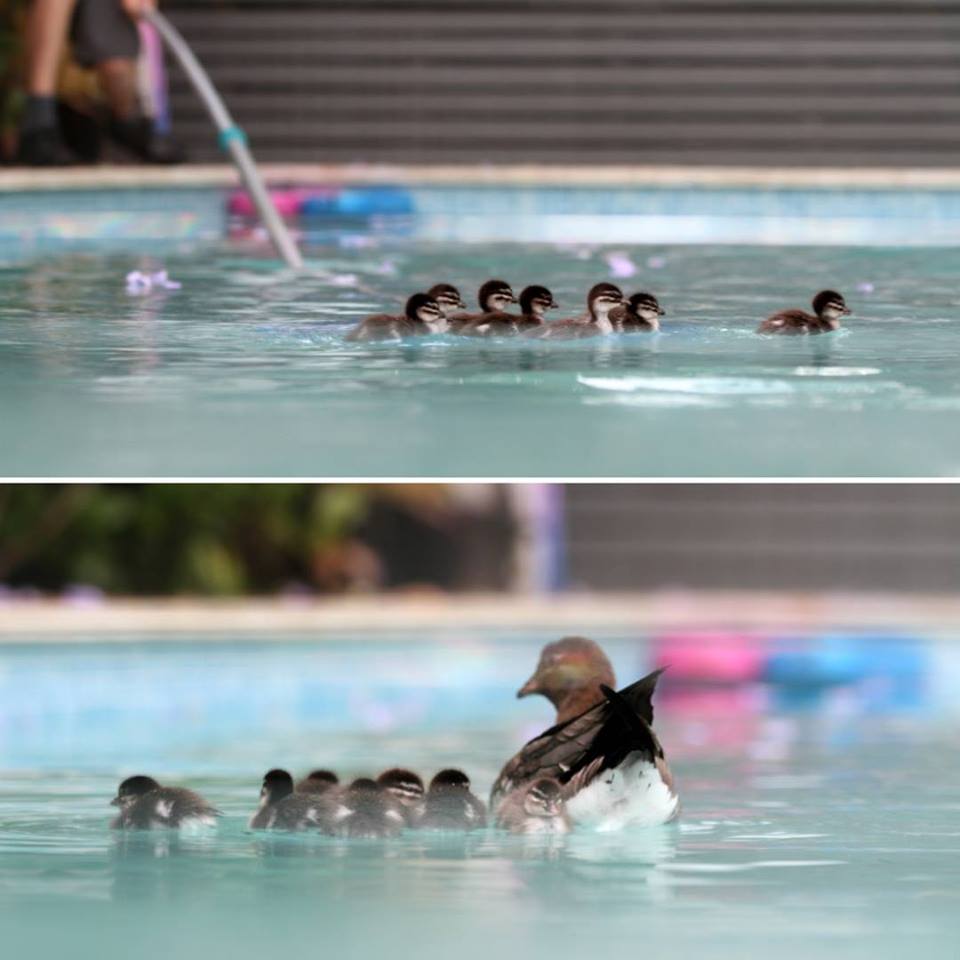
7 little ducklings being scooped up out of our pool this week.
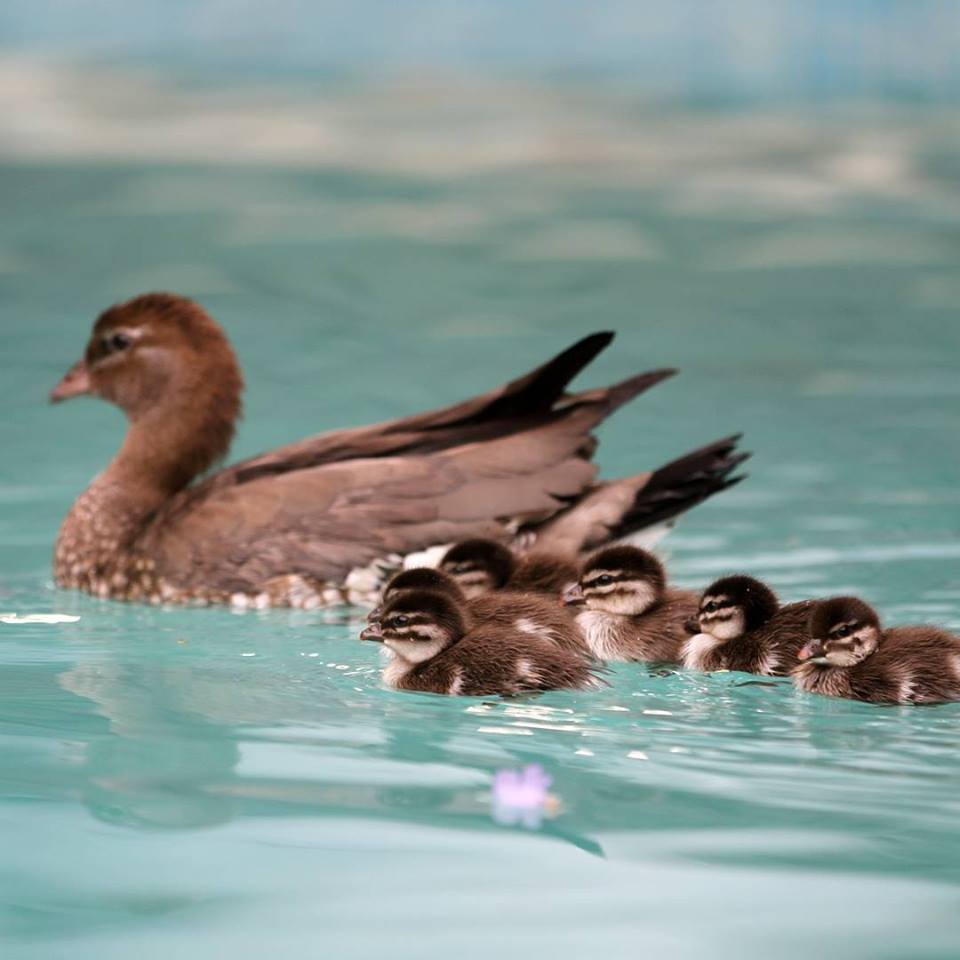
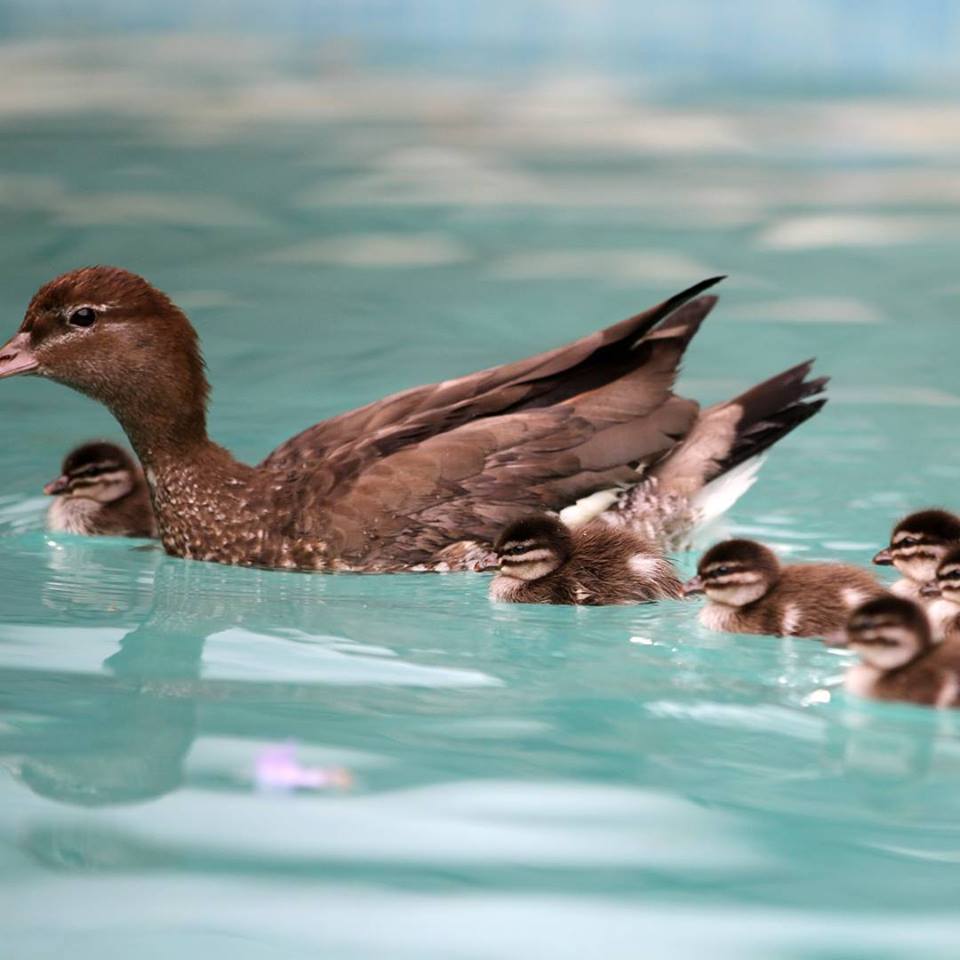
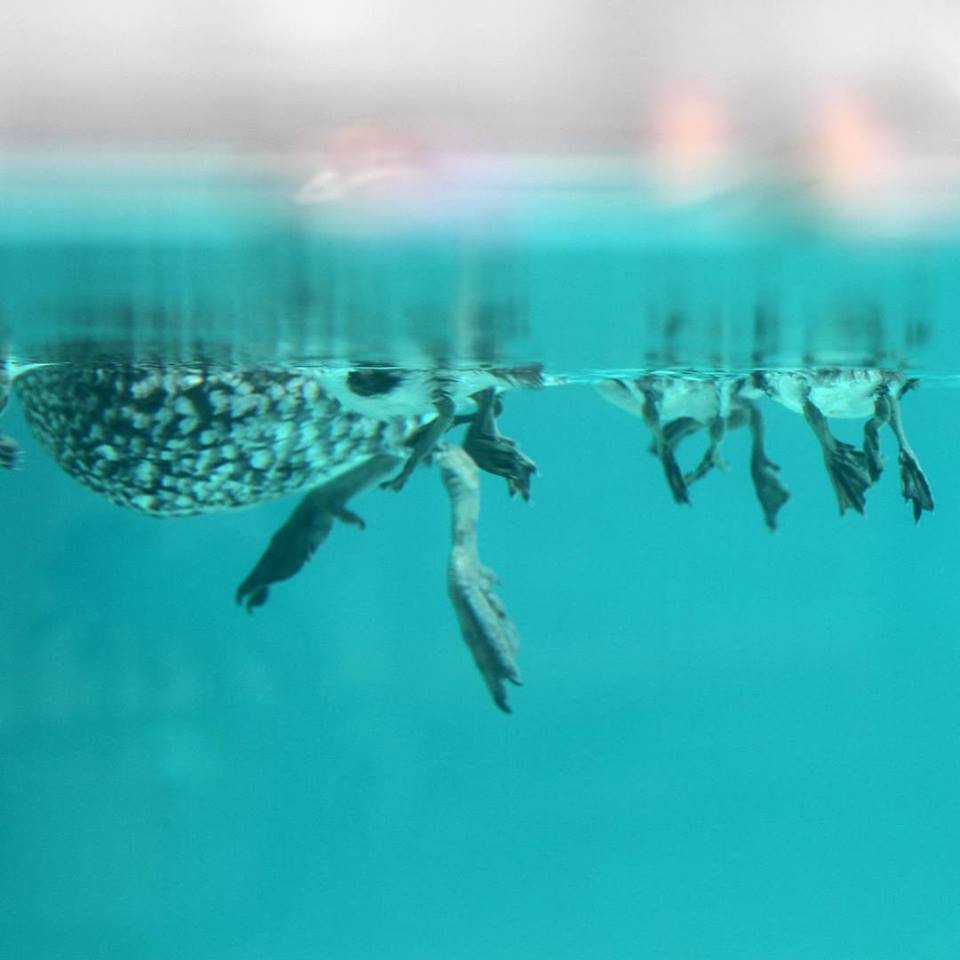

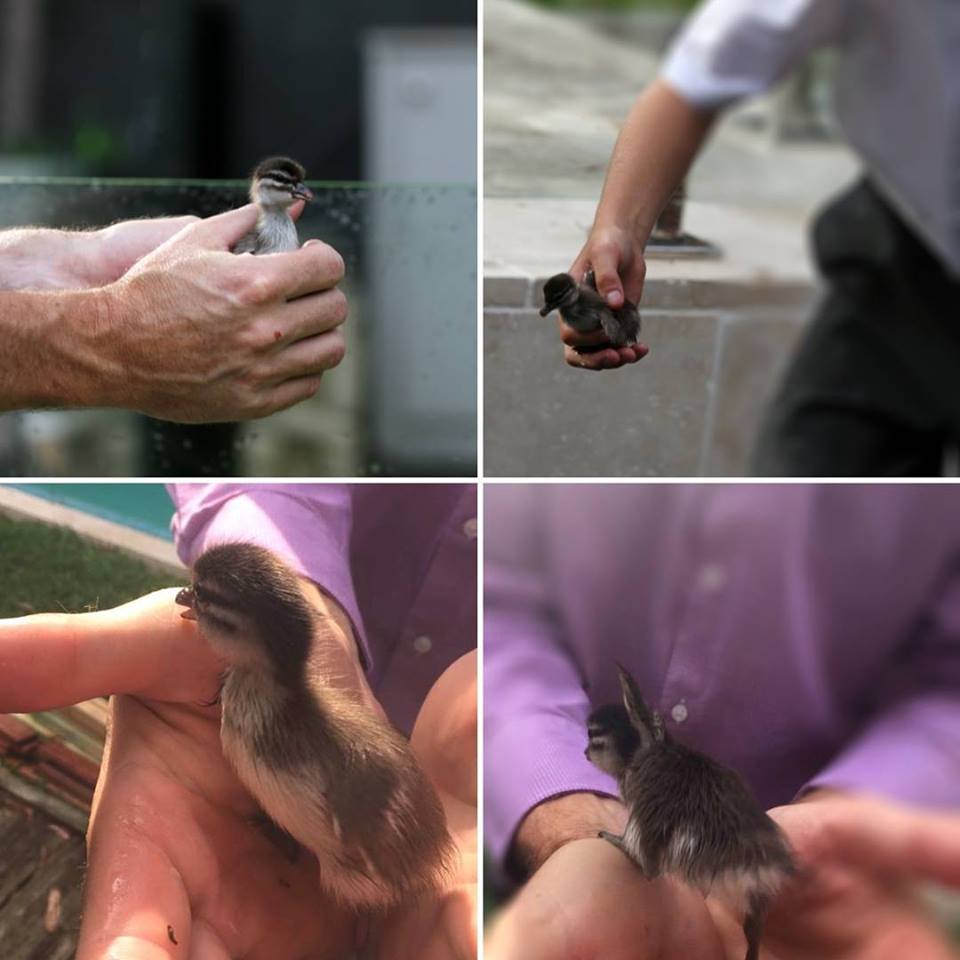
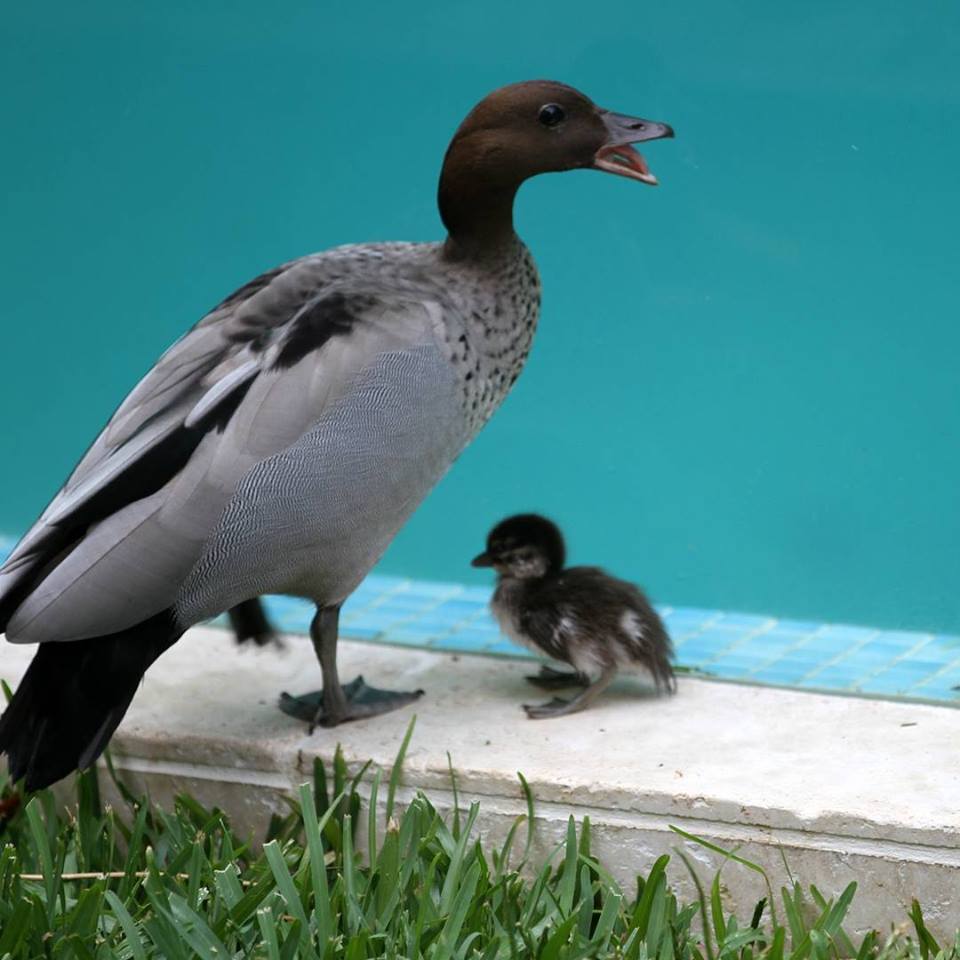
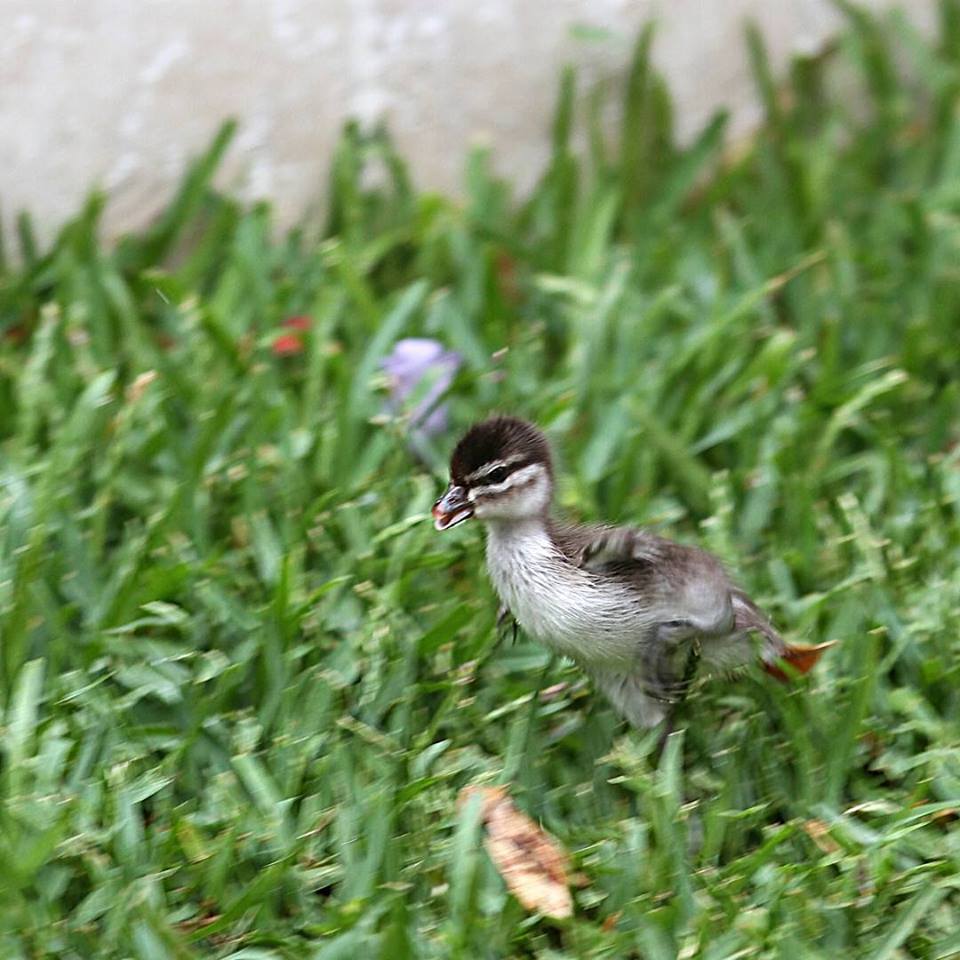
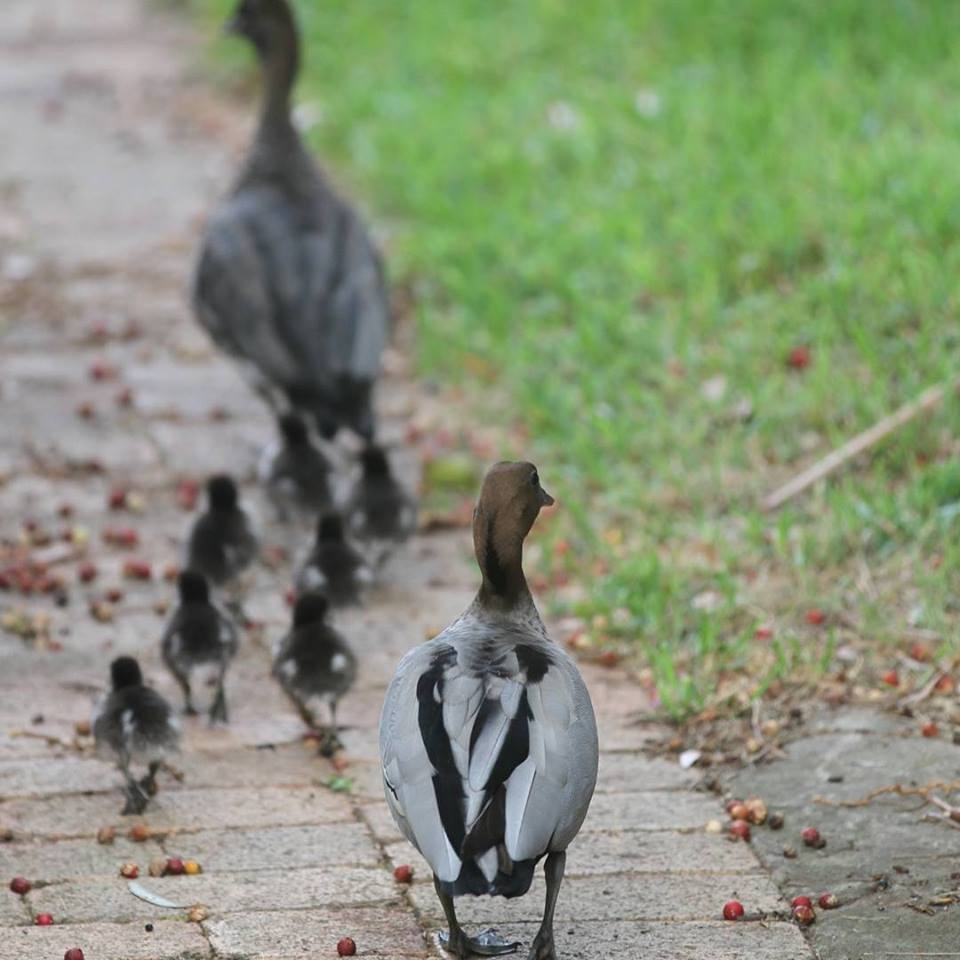
Australian Wood Duck
The Australian Wood Duck Chenonetta jubata is a medium-sized 'goose-like' duck with a dark brown head and a pale grey body with two black stripes along the back. Chenonetta jubata is from the Greek words chen, meaning ‘goose’, and netta, meaning ‘duck’. Jubata is from the Latin wordjubatus, meaning ‘maned’. Males have the darker head and a small dark mane, with a speckled brown-grey breast and a black lower belly and undertail. The females have a paler head with two white stripes, above and below the eye, a speckled breast and flanks, with a white lower belly and undertail. In flight, the wings are pale grey above, contrasting with black wingtips, and have a noticeable white bar on the underside (the secondaries). They walk easily on land and may be seen perching on logs and in trees. They will only take to open water when disturbed. This species is also known as the Maned Duck or the Maned Goose.
They form monogamous breeding pairs that stay together year round. Nests can be found in tree holes, above or near water, often re-using the same site. These nests are lined with down. The female incubates 9-11 creamy white eggs while the male stands guard.
Once the ducklings are ready to leave the nest, the female flies to the ground and the duckling will leap to the ground and follow their parents. Like other waterbirds, the Australian Wood Duck hatches with a covering of waterproof down and can enter the water almost straight away. Both parents feed young and the juvenile ducklings will remain with their parents up to a month after fledging.
They are found throughout Australia in grasslands, open woodlands, wetlands, flooded pastures and along the coast in inlets and bays. The most common call is a loud, rising gnow sound the female makes while the male call is shorter and higher than the females. Staccato chattering is also present in flocks when feeding. They eat grasses, clover and other herbs, and occasionally, insects.